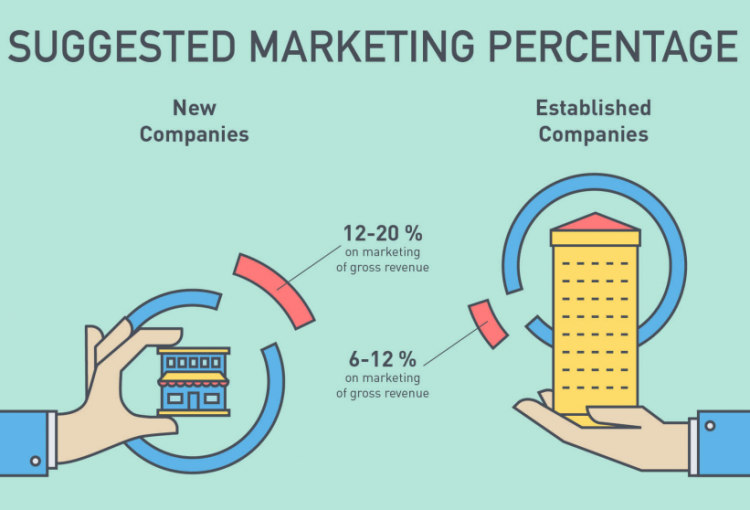No products in the cart.

The 16 Best Marketing Strategies to Try in 2020
Well, 2020 is here. And, so far, it doesn’t look much different than December 2019. That’s why we asked dozens of digital marketers for their best marketing strategies of last





Today, you need to have an engaged online ecosystem to get customers.
Think about it. What do you do when you want to buy something or find a service provider?
The yellow pages?…No. You research online.
You are not alone. 85% of people go online to find the product or service they want to buy.
Consumers also:
Will that customer find out about your business during their research? if not, you are losing out on business every, single, day.
But, let’s say a consumer hears about your business somehow. This can happen if you’ve been in business for many years. Being in business for many years does not protect you from losing business to a more online savvy business owner.
So, a new potential customer hears about your business from a friend (online or in person), but before they contact you, before they do business with you, they are going to search for your business online.
What will they find?
They will investigate your businesses’ social media pages and website.
Your potential customers are judging your business online at every contact point.
Does your online ecosystem match the quality of your business?
That’s where online/digital marketing comes in. But what is online marketing?
This means people find out about your business through online sources (google, bing, website, social media), then contact you to purchase your products or services.
When you work with Elavend, we create multiple ways a lead/customer can contact you. They can call you, your phone number will be prominently displayed and easy to find. We set up “contact” forms on your website. So someone will fill out a form on your website, and you will receive an email with their message. We can configure live chat, so you can chat with your customer in real time over chat. Another way customers can contact you is through your social media channels (facebook, instagram, twitter, linkedin, etc) messaging.
That is up to you. Once you have your customer’s contact information or their service/product request, you determine how you want to close the deal. We help provide interested people who are interested in doing business with you, once you have them, you go through your sales/closing process.
We have tools such as CRM (Customer relationship Management) software that we can configure for you so you can keep track of your customers and leads, and better be able to close them.
Let’s face it, to the average business person, marketing equals promotion.
Marketing is what you say and how you say it when you want to explain how awesome your product is and why people should buy it.
Marketing is an ad. Marketing is a brochure. Marketing is a press release. And more recently, Marketing is a Facebook page or a Twitter account.
Marketing, to many business people, is simply selling at a larger scale.
The reality, is that marketing sits at the intersection of the business and the customer – the great arbiter of the self interests of the business and the needs of the buyer.
Quick Takeaways:

Marketing is one of the most important things a business can do. Not only does marketing build brand awareness (McDonalds, Apple, etc) but it can also increase sales, grow businesses and engage customers.
Yes marketing works. But like any mission critical business process, marketing must be well planned and well managed.
Yes. When we market your business, we first develop a ‘perfect customer’ profile. We find out as much as we can about this ‘perfect customer’ from their income, where they live, their hobbies, etc then we target that ‘perfect customer’.
We take your ‘perfect customer’ profile we create, then we target your ‘perfect customer’ through different channels and methods.
If you are just starting out or focusing on growth then you should take the time and effort to build the necessary foundation of an ideal target client and core message of difference. Then you can put in motion an increasing series of lead generation tactics to spread that core message.
Done properly, it is likely going to take six months to a year for you to see the kind of long term momentum that you want. The kind of momentum that has people talking about you and commenting that they see you everywhere. Marketing is a living and evolving system.
We will work with you to determine your involvement. However, we will need to work together to make sure we are targeting your ‘perfect customer’ and you are closing the leads as you get them.
Marketing budgets vary by industry. However, here is a general rule.
To understand the recommendation, first, let’s define ‘marketing budget.’ Your marketing budget refers to all costs for marketing, advertising, public relations, promotions and anything else you might blanket under that very wide-cast net called ‘marketing’ on a day-to-day basis: for example, Google AdWords, social media, print ads, sponsorships, collateral and even tastings.
As you’ll see below, the ideal budget depends on your current marketing foundations. BUT, as a general rule based on the latest research, expert opinions and years of marketing experience, we say:
You should spend 2–5% of your sales revenue on marketing.
The U.S. Small Business Administration recommends spending 7 to 8 percent of your gross revenue for marketing and advertising if you’re doing less than $5 million a year in sales and your net profit margin—after all expenses—is in the 10 percent to 12 percent range.

Years that require more spending will arise whenever you need to invest in the foundation for all of your day-to-day marketing activities.
For example, an up-to-date, performance-based website is key—perhaps the key—to a solid marketing foundation. Why? Your website is available for both showcasing and selling your marketing services 24/7.
You will likely have to exceed your 5% marketing budget to update your website once every three to five years. Thus, the marketing foundation costs are not typically included in your 5%.
In general, your marketing foundation includes:
Without a solid marketing foundation, your day-to-day marketing activities will range anywhere from “not very effective” to “a waste of money.”
If you are marketing from a fairly static annual budget, you’re viewing marketing as an expense. Good marketers realize that it is an investment. – Seth Godin
Now that you understand the 5% rule and the importance of your marketing foundation, it’s time to talk about where to spend your budget.
The first step toward marketing budget allocation is determining your marketing goals for the year. We recommend at least three S.M.A.R.T. goals with predefined success measures tied to each.
Here are some common ones:
Next, examine your marketing foundation. Do you have the foundation in place to reach your goals?
Check your brand, website, communication pieces and reporting systems. Questions to answer:
With goals set and success measures in place, it’s time to allocate your marketing budget.
Your first priority is to remedy any weaknesses found in step two. Addressing weaknesses found in step two, more often than not, will be done with extra funding—marketing and/or business development funding—so you still have the full 5% of sales revenue to devote to day-to-day marketing activities.
Remember, both are necessary to launch your growth (with no traffic, even the best website in the world is worth very little).
With goals set and a strong marketing foundation (including a marketing strategy), you’re ready to select marketing activities.





